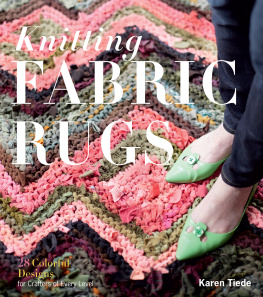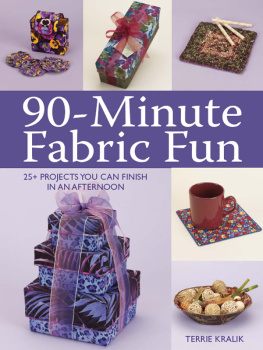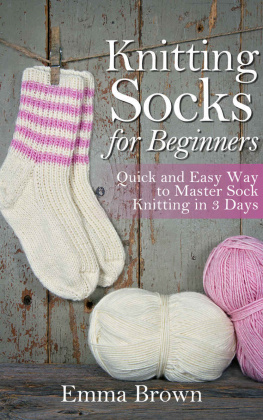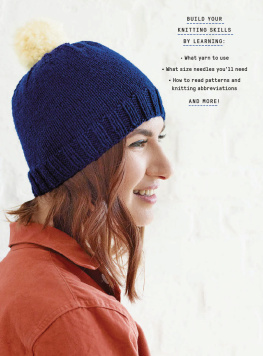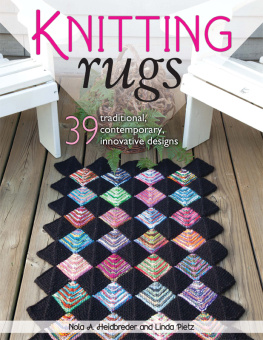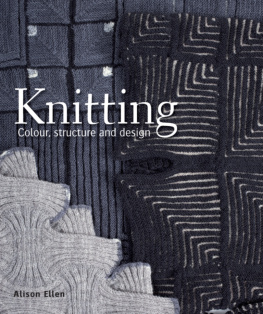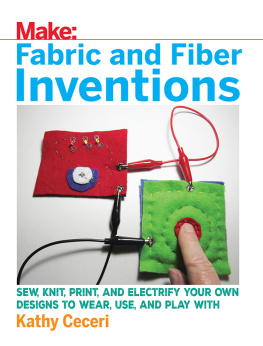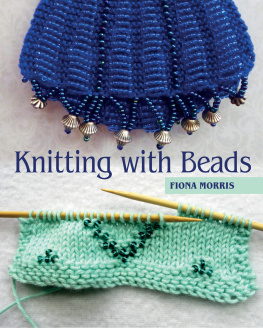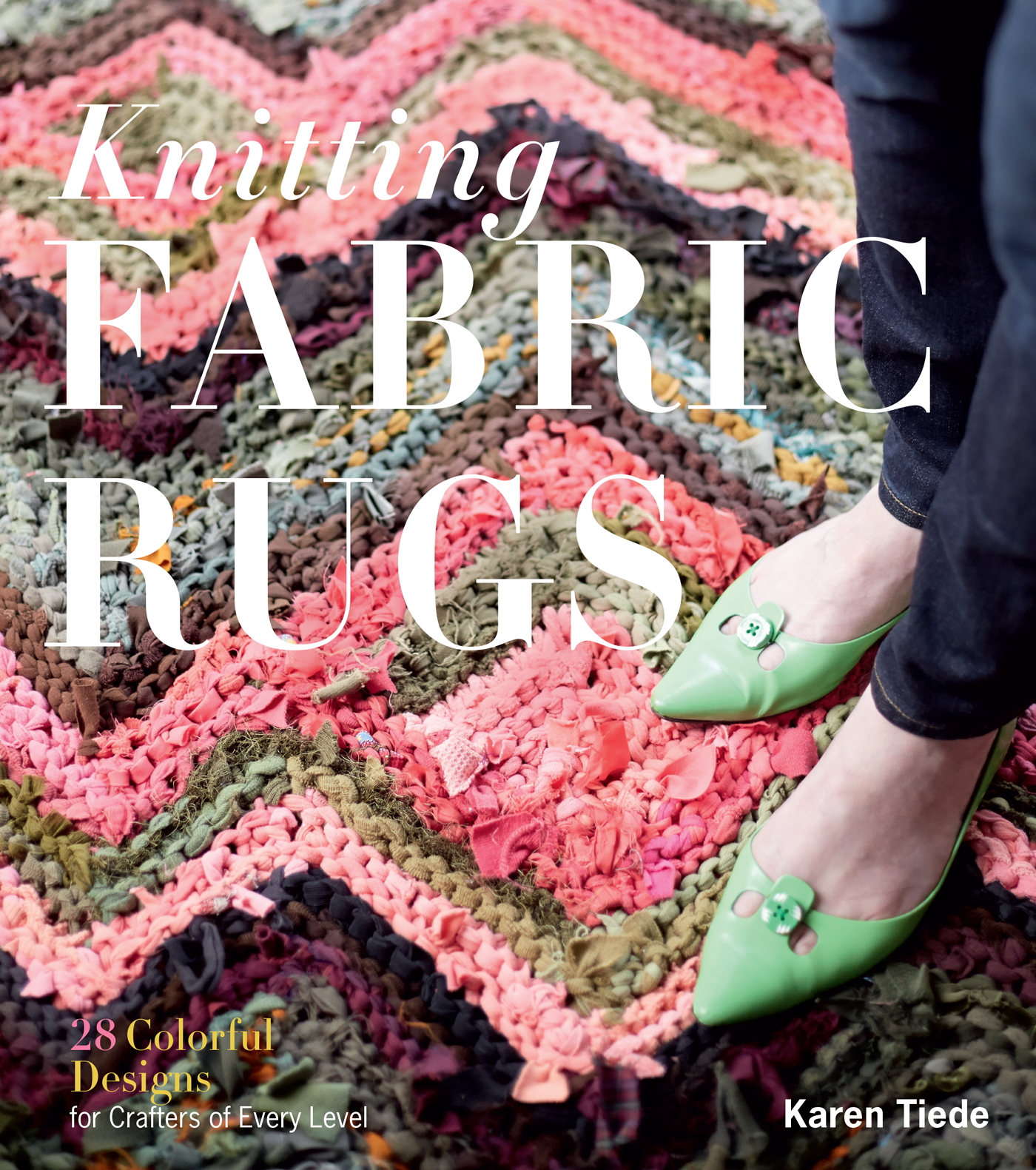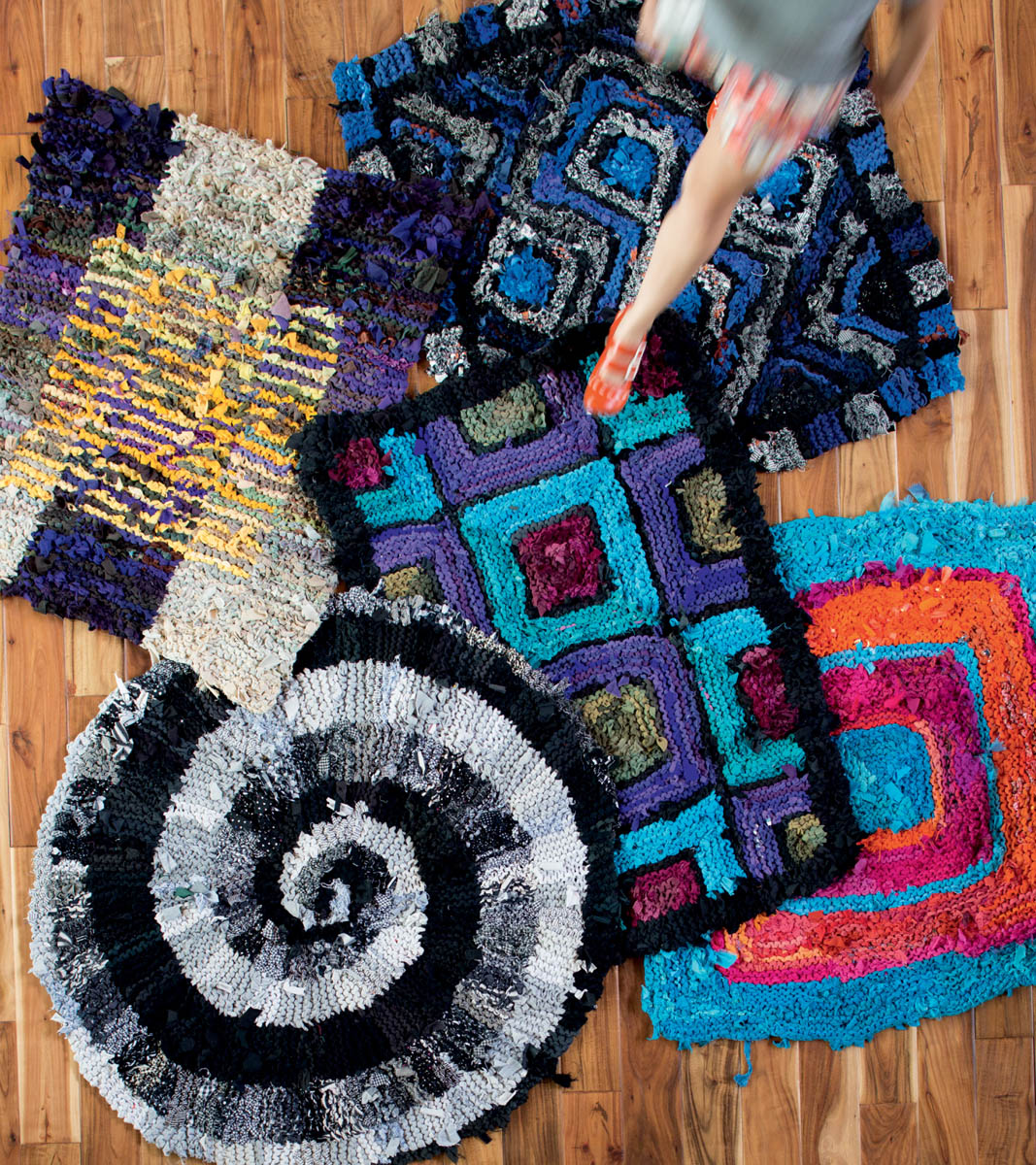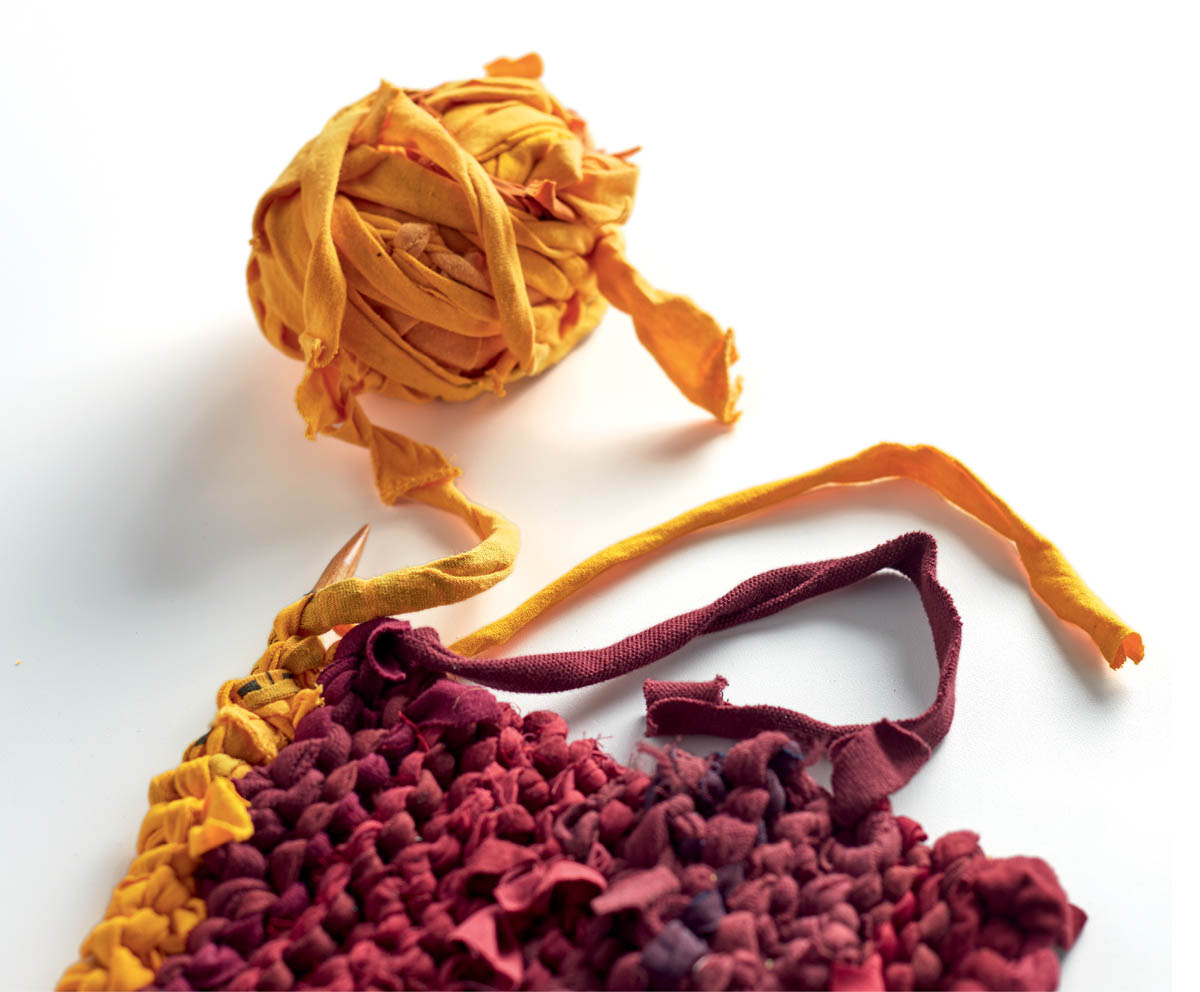Dedication
To my mother, who taught me to knit
Contents
Introduction
Knitted Rugs:
The Backstory
I have been a knitter all my conscious life. I cant remember not knowing how to knit. I recall a bulky sweater jacket I knit as a freshman in high school, and knee socks with clock designs knit sometime before graduation. There was an afghan in there, also at least one or two. My mother knits (my father never wore store-bought winter socks), her mother knit, and her mother before that.
I discovered Kaffe Fassett in 1986 during grad school in western Massachusetts. A friend bought me his first popular book, Glorious Color, and I knitted her a sweater in return. Next there was a Fassett vest and an argyle sweater. I discovered the grab bags at WEBS yarn store in Northampton, Massachusetts, and I knit on the cheap. I knitted sweaters for everyone in my family, and none of them fit: something for Eric in green Lopi, which knit very quickly; something with cables for Paul. Eventually, I learned not to knit sweaters for men I wasnt married to.
Then I moved to North Carolina, where its warm most of the time, and the sweater season is less than four months long. Still, I continued to knit. Tried cotton and didnt like the way it hung. Tried Fair Isle in the wrong colors for me. I knit a completely complicated Aran in the round, followed by Fassetts Tumbling Blocks sweater, and entered it in the state fair. The judge said the buttons were gaudy, and I never entered the state fair again. It wasnt just the buttons: the gauge was all wrong, and the sweater never fit. It took two more Fassett intarsia sweaters to teach me, the hard way, that a swatch knit without intarsia doesnt give the gauge you get when you knit the whole garment in an intarsia pattern.
I continued to knit, but because I lived in a warm state, I turned to projects other than garments. I made a knitted lace tablecloth for my brother and his wife as a wedding present (6 miles of thread) and finished it before the birth of their first child. When I went on a 28-day tour of Antarctica for the Y2K turn-of-the-millennium, I knitted socks on the way and bought lots of New Zealand wool. When I came back, however, I was so overwhelmed by Antarctica that I couldnt bear to knit, and hung up my circulars for what turned out to be four years. Became a chainsaw carver and even edited a book titled Carve Smart: 100 Chainsaw Carvers from around the World Answer Questions about Chainsaw Carving. I sold my chainsaw art, but I also discovered how heavy chainsaw art is, how hard it is to sell, and how ephemeral wood art is in a state that has termites.
Then one day, four years after hanging up the needles, I thought about knitting again. There was a reason I hadnt recycled my yarn stash, despite all the Feng Shui advice to the contrary. My best friend gave me The Knitting Sutra for Christmas. I read the book straight through over breakfast, cast on before lunch, and had the ribbing for the back of a sweater done by dinnertime.
Why Knitted Rugs?
My extended family goes to the Outer Banks every summer. While we were in Manteo, North Carolina, on a gray and blustery beach afternoon, we stopped at the Endless Possibilities gallery mentioned in Niche magazine. Their promo said Endless Possibilities is an innovative recycling project that utilizes castoff clothing items from Hotlines fundraising thrift shops to weave new fabric that is transformed into rugs, totes, and other useful and attractive items.
Having been a volunteer on a thrift-shop sorting crew in the past, I could identify the component clothing in the weavings in Endless Possibilities gallery. The weavers cut strips of clothing and used them as weft, selecting colors to coordinate. At the time, I had no interest in weaving but could see that the raw material could be knit or crocheted.
I needed a new bathroom rug, had access to T-shirts, and found a pattern for knitting a bathroom rug out of T-shirts in Leigh Radfords Alterknits. That was the beginning. I knit one rug, then another. My art form was born. It met all criteria: climate independent, cheap, fast, colorful, challenging. I already had all the art-business information needed from my stint as a chainsaw carver and knew that I could figure out how to sell rugs. And there was no end to the raw material.
The 100-Rug Challenge
Somewhere very early in the process, I decided to make 100 rugs, based on a suggestion found in David Bayles and Ted Orlands Art & Fear: Observations on the Peril (and Rewards) of Artmaking, the best book about creativity that I have ever read. The book contends that the best artists make the most art. Committing to a series of 100 rugs eliminated any fear of failure. I wasnt trying to make one good rug or the ultimate rug or a perfect rug; I was going to make 100 rugs and see what happened. Every time I made a rug, the rug itself would provide ideas for what could happen in the next rug. This concept is actually true for all creative endeavors. The most perfect idea becomes more interesting as it is committed to form. Test, and more options appear. The possibilities multiply.
The first rug was straight stripes knitted in four panels. For the second, I knitted six blocks, doing a pickup as I turned the corner and started back with the second color. (It took me at least twelve rugs to understand the garter-stitch color-change problem; see .) I discovered methods of knitting that I liked and methods that I didnt. Im old enough and cantankerous enough, and have read enough Elizabeth Zimmermann, to be ruthless about tossing stuff off the boat if I dont like doing it. This is supposed to be fun. If its not feeling good, why do it? Some of my constraints are age-related and physical. My hands hurt. If I were going to do 100 rugs, I couldnt afford to do anything that made my hands hurt more than they already did.
Constraints That Offer Possibility
The biggest constraint I faced when deciding to knit rugs was ergonomic. I solved it by making the decision to work in garter stitch rather than in stockinette, which requires alternating rows of knit and purl. Purling at 2 stitches to the inch hurts the extensor muscles (the ones that straighten your fingers) in my dominant hand. I cant afford to lose hand dexterity, so garter stitch is a better option, because I can knit every row. Garter stitch offers more advantages than just ergonomics, however, including the fact that its structure results in a springy fabric that stretches fairly evenly in both directions. (For more about the characteristics of garter stitch, see .)
Another ergonomic consideration made me decide to limit the number of stitches on the needle to 12. I can go to 22 stitches in a pinch, but it starts to hurt. So the designs are planned as small units. Knitting is generally a stripy sort of art form. However, when the knitted units are a fixed width, you can move them around in the design to create color areas that are larger than the width of the stripes. You can also turn units so that the stripes move in different directions.

